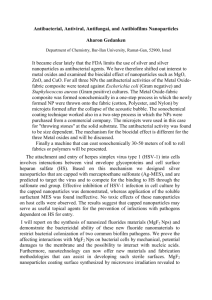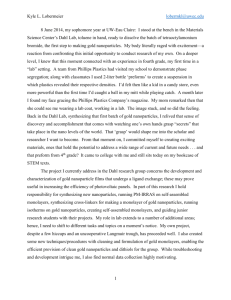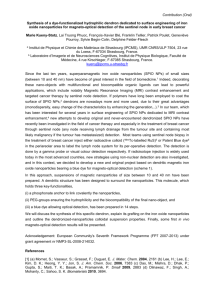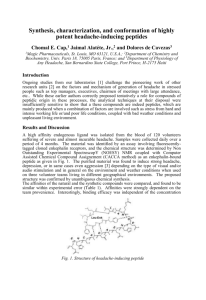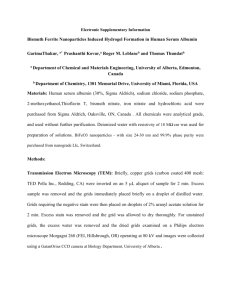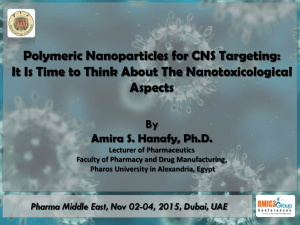Abstract_Lam Kit S. _15 Dec
advertisement
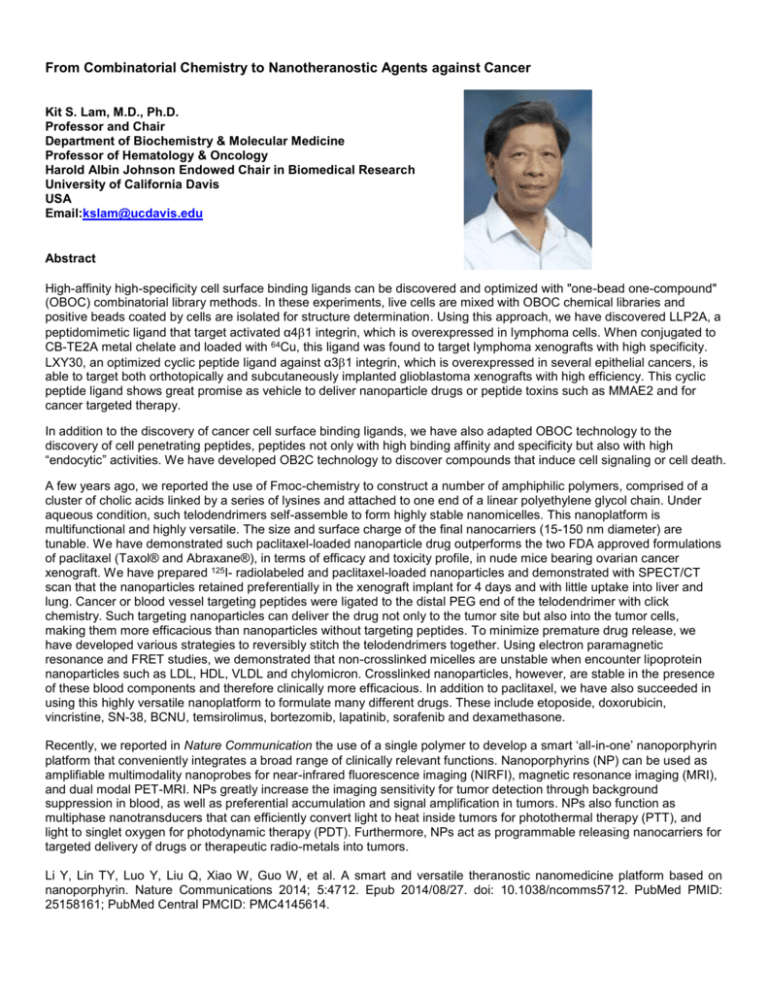
From Combinatorial Chemistry to Nanotheranostic Agents against Cancer Kit S. Lam, M.D., Ph.D. Professor and Chair Department of Biochemistry & Molecular Medicine Professor of Hematology & Oncology Harold Albin Johnson Endowed Chair in Biomedical Research University of California Davis USA Email:kslam@ucdavis.edu Abstract High-affinity high-specificity cell surface binding ligands can be discovered and optimized with "one-bead one-compound" (OBOC) combinatorial library methods. In these experiments, live cells are mixed with OBOC chemical libraries and positive beads coated by cells are isolated for structure determination. Using this approach, we have discovered LLP2A, a peptidomimetic ligand that target activated α41 integrin, which is overexpressed in lymphoma cells. When conjugated to CB-TE2A metal chelate and loaded with 64Cu, this ligand was found to target lymphoma xenografts with high specificity. LXY30, an optimized cyclic peptide ligand against α31 integrin, which is overexpressed in several epithelial cancers, is able to target both orthotopically and subcutaneously implanted glioblastoma xenografts with high efficiency. This cyclic peptide ligand shows great promise as vehicle to deliver nanoparticle drugs or peptide toxins such as MMAE2 and for cancer targeted therapy. In addition to the discovery of cancer cell surface binding ligands, we have also adapted OBOC technology to the discovery of cell penetrating peptides, peptides not only with high binding affinity and specificity but also with high “endocytic” activities. We have developed OB2C technology to discover compounds that induce cell signaling or cell death. A few years ago, we reported the use of Fmoc-chemistry to construct a number of amphiphilic polymers, comprised of a cluster of cholic acids linked by a series of lysines and attached to one end of a linear polyethylene glycol chain. Under aqueous condition, such telodendrimers self-assemble to form highly stable nanomicelles. This nanoplatform is multifunctional and highly versatile. The size and surface charge of the final nanocarriers (15-150 nm diameter) are tunable. We have demonstrated such paclitaxel-loaded nanoparticle drug outperforms the two FDA approved formulations of paclitaxel (Taxol® and Abraxane®), in terms of efficacy and toxicity profile, in nude mice bearing ovarian cancer xenograft. We have prepared 125I- radiolabeled and paclitaxel-loaded nanoparticles and demonstrated with SPECT/CT scan that the nanoparticles retained preferentially in the xenograft implant for 4 days and with little uptake into liver and lung. Cancer or blood vessel targeting peptides were ligated to the distal PEG end of the telodendrimer with click chemistry. Such targeting nanoparticles can deliver the drug not only to the tumor site but also into the tumor cells, making them more efficacious than nanoparticles without targeting peptides. To minimize premature drug release, we have developed various strategies to reversibly stitch the telodendrimers together. Using electron paramagnetic resonance and FRET studies, we demonstrated that non-crosslinked micelles are unstable when encounter lipoprotein nanoparticles such as LDL, HDL, VLDL and chylomicron. Crosslinked nanoparticles, however, are stable in the presence of these blood components and therefore clinically more efficacious. In addition to paclitaxel, we have also succeeded in using this highly versatile nanoplatform to formulate many different drugs. These include etoposide, doxorubicin, vincristine, SN-38, BCNU, temsirolimus, bortezomib, lapatinib, sorafenib and dexamethasone. Recently, we reported in Nature Communication the use of a single polymer to develop a smart ‘all-in-one’ nanoporphyrin platform that conveniently integrates a broad range of clinically relevant functions. Nanoporphyrins (NP) can be used as amplifiable multimodality nanoprobes for near-infrared fluorescence imaging (NIRFI), magnetic resonance imaging (MRI), and dual modal PET-MRI. NPs greatly increase the imaging sensitivity for tumor detection through background suppression in blood, as well as preferential accumulation and signal amplification in tumors. NPs also function as multiphase nanotransducers that can efficiently convert light to heat inside tumors for photothermal therapy (PTT), and light to singlet oxygen for photodynamic therapy (PDT). Furthermore, NPs act as programmable releasing nanocarriers for targeted delivery of drugs or therapeutic radio-metals into tumors. Li Y, Lin TY, Luo Y, Liu Q, Xiao W, Guo W, et al. A smart and versatile theranostic nanomedicine platform based on nanoporphyrin. Nature Communications 2014; 5:4712. Epub 2014/08/27. doi: 10.1038/ncomms5712. PubMed PMID: 25158161; PubMed Central PMCID: PMC4145614.




